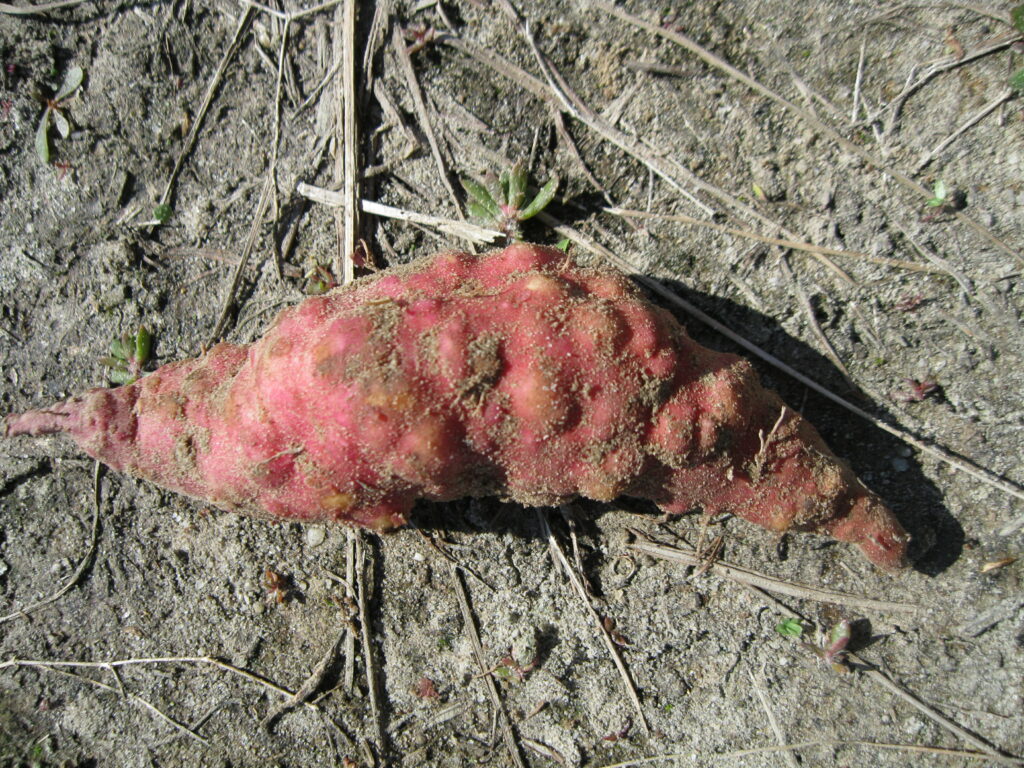Nematicides New and Noteworthy: Label and Registration Updates for Nematicides in Sweetpotato
go.ncsu.edu/readext?1070043
en Español / em Português
El inglés es el idioma de control de esta página. En la medida en que haya algún conflicto entre la traducción al inglés y la traducción, el inglés prevalece.
Al hacer clic en el enlace de traducción se activa un servicio de traducción gratuito para convertir la página al español. Al igual que con cualquier traducción por Internet, la conversión no es sensible al contexto y puede que no traduzca el texto en su significado original. NC State Extension no garantiza la exactitud del texto traducido. Por favor, tenga en cuenta que algunas aplicaciones y/o servicios pueden no funcionar como se espera cuando se traducen.
Português
Inglês é o idioma de controle desta página. Na medida que haja algum conflito entre o texto original em Inglês e a tradução, o Inglês prevalece.
Ao clicar no link de tradução, um serviço gratuito de tradução será ativado para converter a página para o Português. Como em qualquer tradução pela internet, a conversão não é sensivel ao contexto e pode não ocorrer a tradução para o significado orginal. O serviço de Extensão da Carolina do Norte (NC State Extension) não garante a exatidão do texto traduzido. Por favor, observe que algumas funções ou serviços podem não funcionar como esperado após a tradução.
English
English is the controlling language of this page. To the extent there is any conflict between the English text and the translation, English controls.
Clicking on the translation link activates a free translation service to convert the page to Spanish. As with any Internet translation, the conversion is not context-sensitive and may not translate the text to its original meaning. NC State Extension does not guarantee the accuracy of the translated text. Please note that some applications and/or services may not function as expected when translated.
Collapse ▲Root-knot nematodes (RKN; Meloidogyne spp.) are microscopic, soilborne roundworms that feed on plant roots. In sweetpotato, they cause galls, bumps, and knots to form on the sweetpotato storage root (Fig. 1) and they can be difficult pathogens to manage. As part of a holistic nematode management program that includes crop rotation, use of certified seeds and slips, weed management, and use of resistant cultivars (available for certain crops and RKN species), nematicides are important tools in the proverbial toolbox for pushing back against root-knot nematodes.

Figure 1. Galls and bumps on a sweetpotato storage root caused by root-knot nematodes (particularly, the guava root-knot nematode, Meloidogyne enterolobii). (Photo: A. Gorny)
Several exciting new developments in the area of nematicides for management of plant-parasitic nematodes in sweetpotato have been announced.
SalibroTM FIFRA Section 2(ee) Recommendation
The nematicide SalibroTM (Corteva Agriscience; active ingredient fluazaindolizine) received a FIFRA section 2(ee) recommendation for North Carolina. This section 2(ee) allows for a single post emergence soil-directed application (lay-by) treatment in sweetpotato, prior to the vines closing over the row.
It is important to note that even with this Section 2(ee) recommendation, sweetpotato receiving a SalibroTM application must stay in a domestic market.
Data from field research trials at NC State show that SalibroTM is helpful in managing root-knot nematodes in sweetpotato, particularly the guava root-knot nematode (Meloidogyne enterolobii).
Registration of ArinoTM in North Carolina
The nematicide ArinoTM from ProFarm Group received North Carolina state registration for sweetpotato application. This bacterial agent-based nematicide, part of ProFarm Group’s RinoTec™ Technology, is classified by the EPA as a reduced-risk, tolerance exempt nematicide, insecticide, and miticide. In addition to sweetpotatoes, the label also includes several other vegetables such as Irish potato, carrot and onion.
Data from field research trials at NC State showed an increase in sweetpotato marketable yield following application of ArinoTM.
RinoTec™ Technology was the recipient of the EPA’s Green Chemistry Challenge Award in the category of the Design of Safer and Degradable Chemicals.
Managing root-knot nematodes in sweetpotato
If you think you may have root-knot nematode and need assistance with diagnostics or management questions, please contact your local Extension agent. Soil samples can be sent to the NCDA&CS Nematode Assay Lab for nematode analysis. For more information on symptoms and management of root-knot nematodes in sweetpotato and other crops, please refer to our nematode disease factsheets.
Recommendations for the use of agricultural chemicals are included in this publication as a convenience to the reader. The use of brand names and any mention or listing of commercial products or services in this publication does not imply endorsement by NC State University or N.C. A&T State University nor discrimination against similar products or services not mentioned. Individuals who use agricultural chemicals are responsible for ensuring that the intended use complies with current regulations and conforms to the product label. Be sure to obtain current information about usage regulations and examine a current product label before applying any chemical. For assistance, contact your local N.C. Cooperative Extension county center.


